Why Major Construction Firms Choose Lida Group’s Container Worker Houses for Durable and Rapid Prefab Building Deployment.
2025-Aug-27 15:45:54
By Admin
1. Introduction
The global construction industry operates in a high-stakes environment where time, cost, and worker welfare are intertwined. Major construction firms—tasked with delivering large-scale projects like skyscrapers, highways, and industrial facilities—face unique challenges when it comes to worker accommodation. These firms need housing solutions that can keep up with tight project timelines, withstand harsh job site conditions, and meet evolving labor regulations—all while ensuring workers have safe, comfortable spaces to rest.
Traditional worker accommodation—often built on-site with brick, wood, or low-grade metal—falls short on multiple fronts. On-site construction of dormitories can take 10–16 weeks, delaying worker deployment and pushing back project start dates. These structures also lack durability: wooden dormitories rot in humid climates, uninsulated metal shelters fail in extreme temperatures, and both require frequent repairs that drain resources. For major firms operating across multiple regions, these inefficiencies are not just costly—they threaten project profitability and reputation.
Lida Group’s container worker houses have emerged as the preferred solution for major construction firms worldwide. Unlike conventional accommodation, these prefabricated (prefab) container houses combine exceptional durability with rapid deployment, addressing the two most critical pain points of construction site housing. By leveraging high-strength steel, precision factory manufacturing, and modular design, Lida Group delivers worker houses that are operational in weeks (not months), withstand decades of harsh use, and adapt to changing project needs.
This article explores why major construction firms are choosing Lida Group’s container worker houses. It begins by examining the unique accommodation challenges faced by large construction firms, then delves into the durability features that make these container houses suitable for construction sites—from weather resistance to structural strength. Next, it details the rapid deployment capabilities enabled by prefab technology, including factory manufacturing and on-site efficiency. The article also highlights additional benefits like cost predictability, regulatory compliance, and worker welfare improvements, supported by real-world case studies of major firms that have adopted these solutions. Finally, it concludes with a summary of how Lida Group’s container worker houses have become a strategic asset for construction firms looking to optimize project timelines, reduce risks, and uphold high standards of worker care.
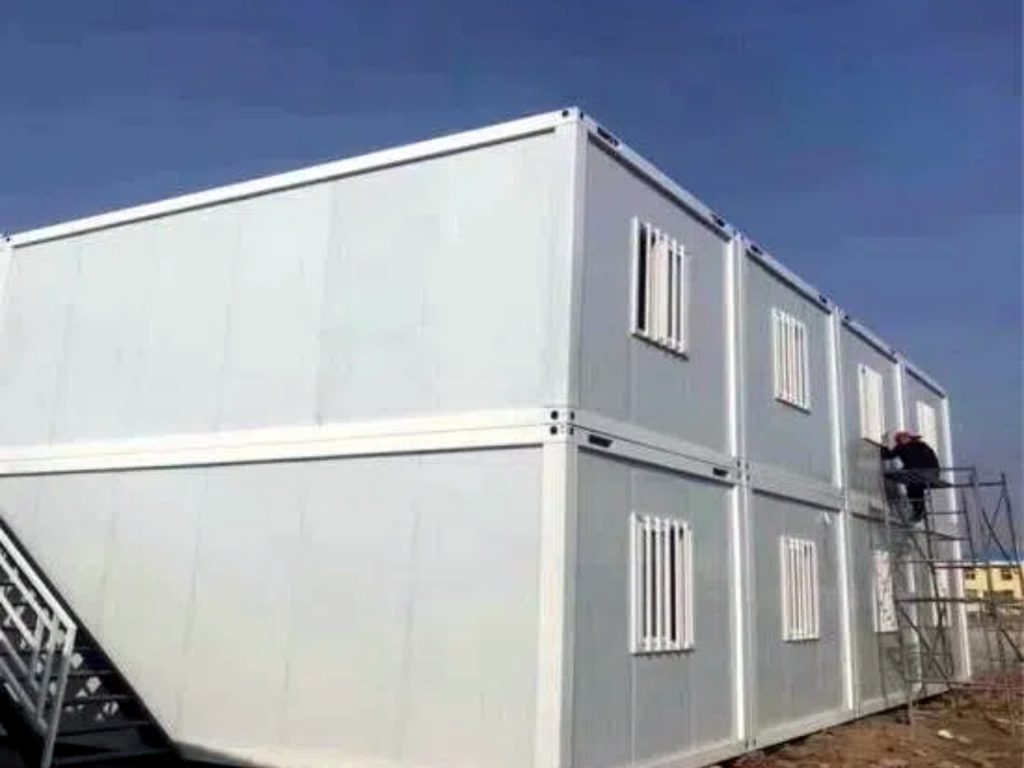
2. The Unique Accommodation Challenges of Major Construction Firms
Major construction firms operate on a scale and pace that amplifies the challenges of worker accommodation. Unlike small contractors, these firms manage large workforces (often 500+ workers per project), multiple simultaneous projects across diverse climates, and strict contractual deadlines. Below are the four core challenges that drive their need for durable, rapidly deployable accommodation:
2.1 Tight Project Timelines: The Cost of Delayed Accommodation
Major construction projects are governed by strict deadlines, with penalties for delays ranging from \(10,000 to \)100,000 per day. Worker accommodation is a critical precursor to project launch—without a place for workers to live, construction cannot begin. Traditional on-site dormitory construction creates two key delays:
- Long Lead Times: Building a 500-worker dormitory with brick or concrete takes 12–16 weeks, forcing firms to either delay project start dates or house workers in temporary, substandard shelters (e.g., tents, repurposed shipping containers). A 2024 survey by the Construction Industry Institute (CII) found that 68% of major firms have delayed project launches by 4–6 weeks due to slow accommodation construction.
- Weather-Dependent Delays: On-site construction is vulnerable to rain, snow, or extreme heat, which can extend timelines by 2–4 weeks. For firms working in regions like the Middle East (summer temperatures up to 48°C) or Northern Europe (winter snowfall), these delays are almost inevitable.
Rapidly deployable accommodation is not just a convenience—it is a contractual necessity. Firms that can house workers in weeks (not months) gain a critical competitive advantage in meeting deadlines.
2.2 Harsh Job Site Conditions: The Need for Durable Housing
Construction sites are unforgiving environments for worker accommodation. Dormitories must withstand:
- Physical Wear and Tear: Heavy machinery (e.g., forklifts, cranes) operating nearby, accidental impacts, and constant foot traffic can damage fragile structures. Wooden dormitories often develop cracks or rot within 1–2 years, while uninsulated metal shelters dent easily and rust in humid conditions.
- Extreme Weather: From monsoons in Southeast Asia to sandstorms in the Middle East, construction sites face diverse weather risks. Traditional dormitories struggle to cope: wooden structures flood in heavy rain, and metal shelters overheat in direct sunlight.
- Dust and Debris: Construction sites generate high levels of dust, which clogs HVAC systems, damages fixtures, and degrades building materials. Traditional dormitories with poor sealing require constant cleaning and maintenance to remain habitable.
Durable accommodation reduces maintenance costs and avoids the need for mid-project repairs—critical for firms managing tight budgets.
2.3 Mobile Workforces: Accommodation That Moves with Projects
Major construction firms often move workers between projects—e.g., from a highway project in Texas to a hospital construction in Florida. Traditional dormitories are permanent structures, forcing firms to either abandon them (wasting investment) or incur high demolition costs. This creates two problems:
- Capital Waste: A firm that builds a $500,000 concrete dormitory for a 2-year project loses the entire investment when the project ends.
- Deployment Delays: For each new project, the firm must build new accommodation, repeating the 12–16 week construction cycle.
Mobile, reusable accommodation is essential for firms with geographically diverse projects. It allows them to transfer housing between sites, reducing capital expenditure and accelerating project launch.
2.4 Regulatory Compliance: Avoiding Fines and Reputational Risk
Major construction firms operate in a heavily regulated environment, with labor laws governing worker accommodation becoming increasingly strict. Key regulatory requirements include:
- Space Standards: The International Labour Organization (ILO) mandates a minimum of 4–5 square meters per worker. In the European Union, firms that violate this standard face fines of up to €50,000 per worker.
- Health and Safety: Regulations require accommodation to have adequate ventilation, sanitation, and fire safety features. In Australia, non-compliant firms can face criminal charges for endangering workers.
- Climate Control: Countries like Saudi Arabia and Qatar require air conditioning in worker accommodation during summer months. Firms that fail to comply risk project shutdowns.
Traditional accommodation often fails to meet these standards, exposing firms to fines, legal action, and reputational damage. For large firms with global brands, reputational harm can be even more costly than fines—leading to lost contracts and investor scrutiny.
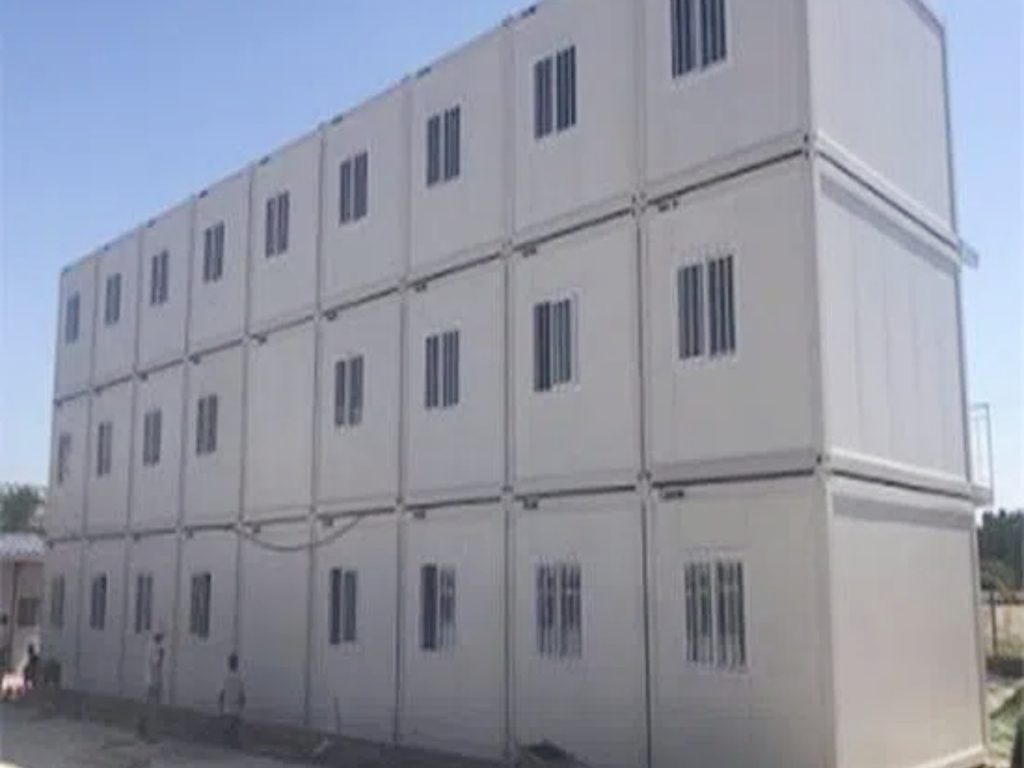
3. Durability: The Foundation of Lida Group’s Container Worker Houses
Major construction firms prioritize durability above all else when choosing worker accommodation—they need housing that can withstand years of harsh use across multiple job sites. Lida Group’s container worker houses are engineered for durability, using premium materials and structural designs that outperform traditional alternatives. Below are the key durability features that make these houses the top choice for major firms:
3.1 High-Strength Steel Structure: Withstanding Wear and Weather
The core of Lida Group’s container worker houses is a robust steel frame that delivers unmatched structural integrity:
3.1.1 S355JR Structural Steel: Strength for Heavy-Duty Use
All container houses are built with S355JR structural steel—a high-strength low-alloy (HSLA) steel with a minimum yield strength of 355 MPa. This steel offers three critical benefits for construction sites:
- Impact Resistance: S355JR steel can withstand accidental impacts from construction equipment (e.g., a forklift bumping into a wall) without denting or cracking. Traditional wooden or low-grade metal structures would require repairs after such impacts, but Lida Group’s steel frames remain intact.
- Weather Resilience: The steel frame is engineered to withstand extreme weather conditions, including:
-
- Wind speeds up to 150 km/h (93 mph), making it safe for use in hurricane-prone regions like the Caribbean or Southeast Asia.
-
- Snow loads up to 1.5 kN/m² (150 kg per square meter), suitable for winter construction sites in Canada or Northern Europe.
-
- Seismic activity up to magnitude 7.0, ideal for earthquake zones like Japan or California.
- Long Lifespan: S355JR steel resists warping, rot, and pest infestations (e.g., termites), giving the container house a lifespan of 25–30 years. This means major firms can reuse the houses across 5–6 projects (each lasting 4–5 years) before needing replacement—far longer than the 5–10 year lifespan of traditional wooden dormitories.
3.1.2 Hot-Dip Galvanization: Corrosion Resistance for Harsh Environments
Construction sites are often exposed to corrosive elements—saltwater in coastal areas, chemicals in industrial zones, and humidity in tropical regions. To protect against corrosion, all steel components of Lida Group’s container houses undergo hot-dip galvanization:
- Process: Steel is submerged in molten zinc (at 450°C), which forms a thick, adherent coating that acts as a barrier against moisture and chemicals.
- Performance: The galvanized coating resists rust for 20–25 years, even in harsh environments. A study by the American Galvanizers Association found that galvanized steel in coastal construction sites lasts 5 times longer than uncoated steel.
- Cost Savings: For major firms, this means no annual repainting or corrosion repairs—saving \(2,000–\)5,000 per house per year compared to uncoated metal or wooden structures.
3.2 Reinforced Exteriors: Protection Against Physical Damage
The exterior of Lida Group’s container worker houses is designed to withstand the rough conditions of construction sites:
3.2.1 Thick Steel Panels: Resisting Dents and Scratches
Walls and roofs are made of 1.2–1.5 mm thick galvanized steel panels—thicker than the 0.8 mm panels used in standard shipping containers. This extra thickness:
- Prevents Dents: Panels resist dents from flying debris (e.g., rocks, construction materials) or accidental impacts.
- Blocks Pests: The thick steel creates an impenetrable barrier against rodents and insects, which often infest wooden dormitories and damage wiring or fixtures.
- Reduces Noise: The dense steel panels absorb sound from construction machinery, creating a quieter interior for workers to rest.
3.2.2 Impact-Resistant Windows and Doors
Windows and doors are critical weak points in traditional accommodation, but Lida Group’s designs prioritize durability:
- Windows: Double-glazed, shatterproof glass windows with steel frames. The glass is resistant to impacts from debris, and the frames are reinforced to prevent bending or warping.
- Doors: Solid steel doors with heavy-duty hinges and locking mechanisms. The doors can withstand repeated use (hundreds of times per day by workers) and remain functional for decades. Weatherstripping around doors and windows also prevents dust and water infiltration, reducing interior maintenance.
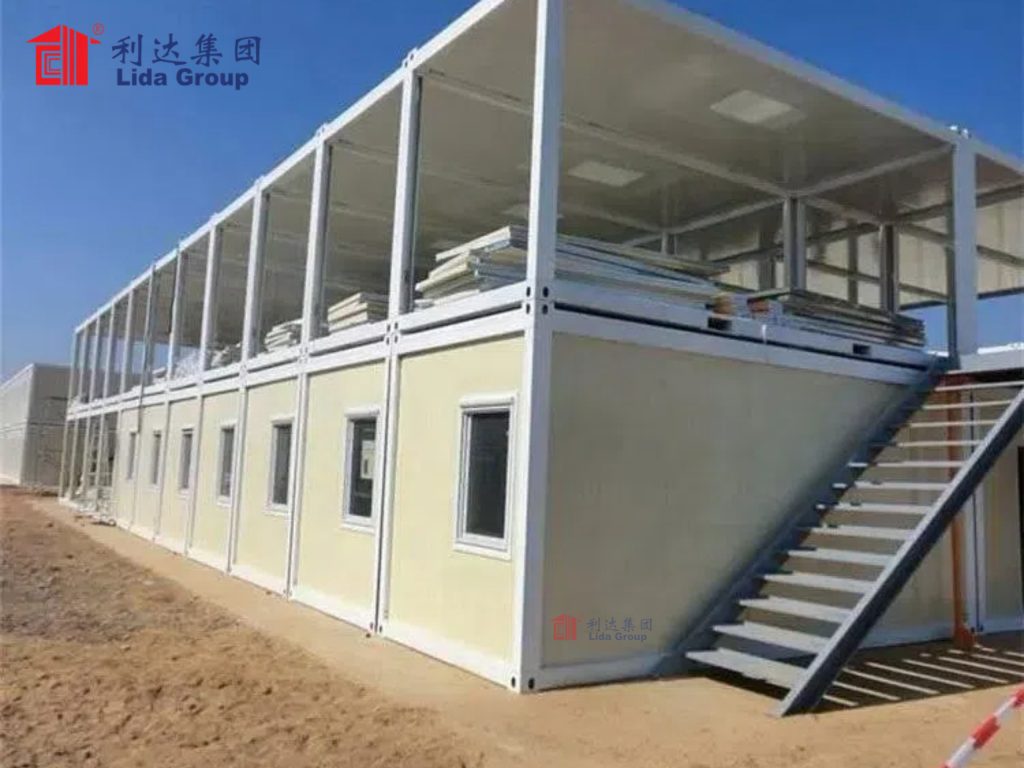
3.3 Durable Interiors: Withstanding Heavy Use
The interior of Lida Group’s container worker houses is built for the demands of construction workers—who often carry tools, wear heavy boots, and use spaces intensively:
3.3.1 Industrial-Grade Flooring
Floors are made of anti-slip vinyl or laminate with a 2–3 mm thick wear layer—designed to resist scratches, stains, and impacts. Key benefits include:
- Scratch Resistance: Withstands scratches from toolboxes, boots, and furniture.
- Water Resistance: Repels spills from food, drinks, or cleaning supplies, preventing water damage.
- Easy Cleaning: The smooth surface can be cleaned quickly with a mop or vacuum, reducing housekeeping costs.
3.3.2 Sturdy Fixtures and Furniture
All interior fixtures and furniture are selected for durability:
- Beds: Steel-framed beds with heavy-duty mattresses that can support 200+ kg. The frames resist bending, even with frequent use.
- Storage: Steel wardrobes and desk drawers with reinforced handles and hinges. These withstand daily opening and closing without breaking.
- Sanitary Fixtures: Ceramic toilets, stainless steel sinks, and showerheads designed for commercial use. These fixtures resist corrosion and clogging, reducing repair frequency.
3.4 Low Maintenance Requirements: Reducing Operational Costs
For major construction firms, maintenance costs can add up quickly—especially for large dormitory complexes. Lida Group’s container worker houses minimize maintenance through:
- Self-Sustaining Materials: Steel, galvanized coatings, and industrial-grade finishes require no regular painting, sealing, or treatment (unlike wood, which needs annual painting).
- Easy Access to Components: Utility systems (electrical, plumbing) are housed in accessible panels, making repairs faster and cheaper. For example, a faulty light switch can be replaced in 15 minutes, compared to 1–2 hours in a traditional dormitory with hidden wiring.
- Predictable Maintenance Schedules: The durable materials and components have long lifespans—e.g., HVAC filters need replacement every 6 months, and mattresses last 5–7 years. This allows firms to plan maintenance budgets in advance, avoiding unexpected costs.
A major construction firm operating 100 Lida Group container houses reported maintenance costs of \(10,000 per year—50% less than the \)20,000 per year it spent on maintaining wooden dormitories of the same size.
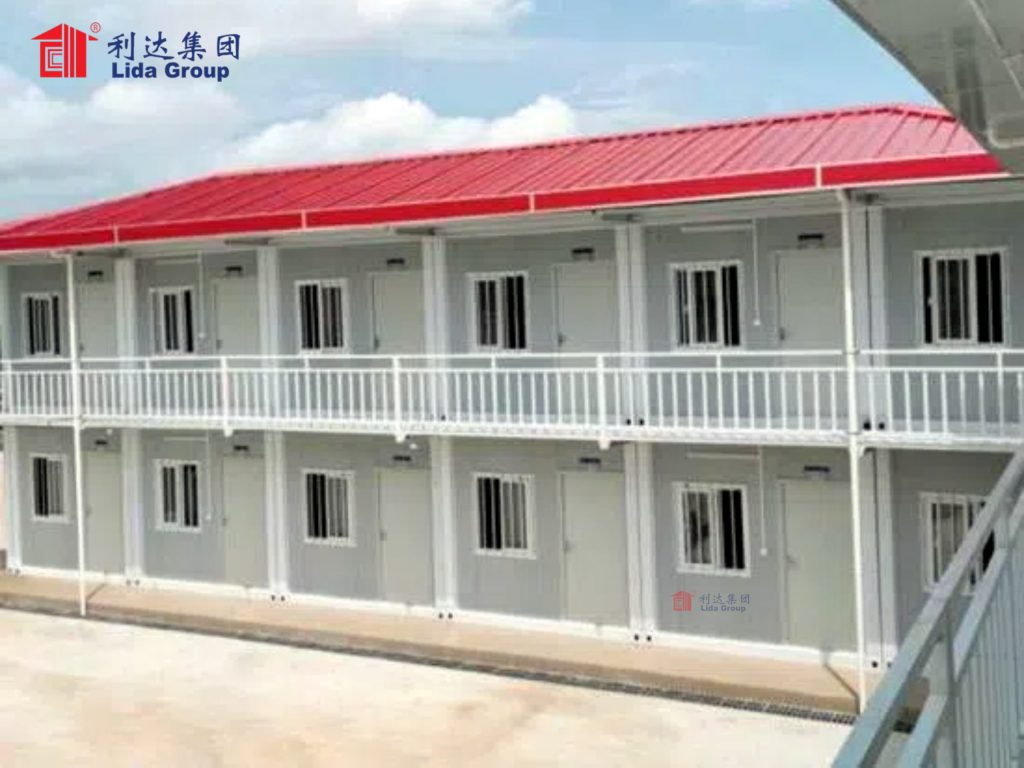
4. Rapid Prefab Deployment: Meeting Tight Construction Timelines
For major construction firms, speed is as critical as durability. Lida Group’s container worker houses leverage prefab technology to cut deployment time by 60–70% compared to traditional on-site construction. This rapid deployment ensures workers can move into accommodation quickly, allowing projects to start on schedule. Below are the key prefab features that enable this speed:
4.1 Factory Prefabrication: Parallel Processing for Faster Delivery
The biggest advantage of prefab construction is that 90% of the work is done in Lida Group’s climate-controlled factories—allowing manufacturing to overlap with site preparation (a process called “parallel processing”). This eliminates the linear timeline of traditional construction, where site work must be completed before building can begin.
4.1.1 Streamlined Factory Production
Lida Group’s factories use automated machinery and standardized processes to produce container houses quickly:
- CNC Machining: Computer Numerical Control (CNC) machines cut, drill, and assemble steel components with tolerances of less than 1 mm. This precision ensures components fit together seamlessly on-site, reducing installation time. A single CNC machine can produce 10 steel frames per day—far faster than manual labor.
- Modular Assembly Lines: Factory workers assemble container houses in modular sections (walls, floors, roofs) on assembly lines. Each section is built to exact specifications, with fixtures (e.g., windows, doors, electrical outlets) pre-installed. A 12-square-meter container house can be fully manufactured in 3–4 days.
- Quality Control Integration: Every section undergoes quality checks during production (e.g., dimensional checks, waterproofing tests), ensuring no defective components reach the site. This eliminates on-site rework, which is a major cause of delays in traditional construction.
4.1.2 Parallel Processing Timeline
For a 500-worker dormitory (125 container houses), the prefab timeline is:
- Weeks 1–2: Design finalization and factory production start. Lida Group’s engineers finalize the dormitory layout (e.g., number of single/double rooms, location of communal facilities) while factory workers begin manufacturing steel components.
- Weeks 3–4: Factory production continues, and site preparation begins. While container houses are being assembled in the factory, the construction firm clears the site, pours concrete foundations, and installs utility connections (water, electricity, sewage).
- Weeks 5–6: Delivery and on-site assembly. Container houses are transported to the site and assembled in 5–7 days. Communal facilities (kitchens, bathrooms, laundry rooms) are connected to utilities, and the dormitory is ready for workers to move in.
Total deployment time: 6 weeks. By contrast, a traditional concrete dormitory of the same size would take 14–16 weeks—more than double the time.
4.2 Efficient On-Site Assembly: Minimal Labor and Time
Once container houses arrive at the site, Lida Group’s streamlined assembly process ensures fast installation—even with limited on-site labor.
4.2.1 Simplified Installation Process
On-site assembly involves three key steps, all designed for speed:
- Foundation Placement: Container houses are placed on pre-poured concrete pads or steel piers. The houses have pre-drilled holes that align with anchor bolts in the foundation, allowing workers to secure them in place with nuts and washers. No on-site welding or cutting is needed.
- Module Connection: Container houses are connected to each other (for multi-unit dormitories) using steel brackets. Electrical and plumbing lines are connected via pre-installed ports, eliminating the need for on-site wiring or piping.
- Utility Hook-Up: Communal facilities (e.g., kitchens, bathrooms) are connected to site utilities (water, electricity, sewage) using quick-connect fittings. This process takes 1–2 days for a 125-house dormitory.
A team of 8–10 workers can assemble 25 container houses per week—far faster than the 5–7 houses per week a team can build with traditional methods.
4.2.2 Minimal Equipment Requirements
Traditional on-site construction requires heavy equipment like concrete mixers, cranes, and scaffolding—all of which are expensive to rent and can cause delays if not available. Lida Group’s container houses require only:
- Small Cranes: 20–30 ton cranes to lift container houses onto foundations. These cranes are smaller and more widely available than the 50+ ton cranes needed for concrete components.
- Forklifts: To move smaller components (e.g., furniture, fixtures) into the houses.
- Basic Hand Tools: Wrenches, screwdrivers, and drills for securing bolts and connecting utilities.
This minimal equipment requirement reduces rental costs and eliminates delays caused by equipment shortages.
4.3 Flexibility for Rapid Expansion or Relocation
Major construction firms often need to adjust worker numbers mid-project (e.g., adding 100 workers for a critical phase) or relocate accommodation to a new site. Lida Group’s container houses enable this flexibility with minimal time and cost:
4.3.1 Fast Expansion
Adding more container houses to an existing dormitory takes just 1–2 weeks:
- New Modules: Lida Group delivers pre-manufactured container houses to the site.
- Quick Integration: The new houses are placed on additional concrete pads, connected to existing utilities via quick-connect fittings, and integrated into the dormitory complex.
For example, a firm with a 500-worker dormitory can add 100 workers’ accommodation in 10 days—far faster than the 4–6 weeks needed to expand a traditional dormitory.
4.3.2 Easy Relocation
When a project ends, container houses can be disassembled and transported to a new site:
- Disassembly: Workers disconnect utilities, remove connecting brackets, and lift the houses off the foundation—taking 1–2 days per 25 houses.
- Transport: Container houses are loaded onto trucks or ships (they fit standard shipping dimensions) and transported to the new site.
- Reassembly: The houses are reinstalled at the new site in 5–7 days, with no loss of quality or functionality.
A major firm that relocated 100 container houses from a highway project in Texas to a hospital project in Florida reported total relocation costs of \(150,000—far less than the \)500,000 it would have cost to build new traditional dormitories.
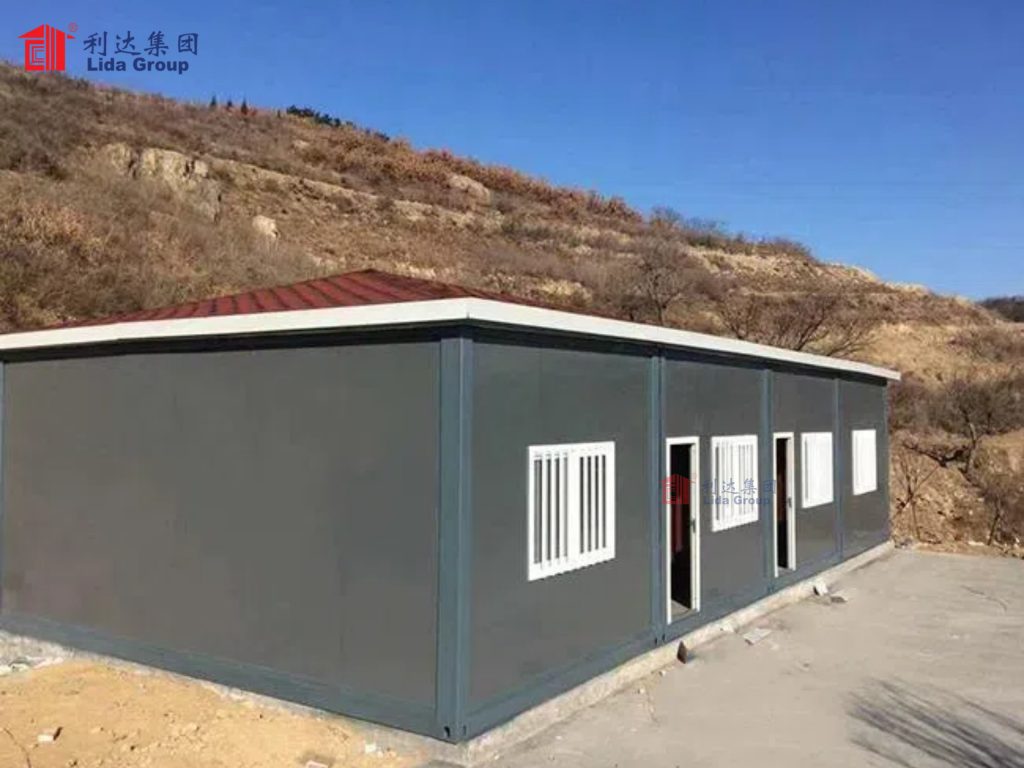
5. Additional Benefits: Why Major Firms Choose Lida Group Over Competitors
While durability and rapid deployment are the primary drivers, major construction firms choose Lida Group’s container worker houses for a range of additional benefits that address their unique needs—from cost predictability to worker welfare. These benefits further solidify Lida Group’s position as the preferred provider for large-scale construction projects.
5.1 Cost Predictability: Avoiding Budget Overruns
Major construction firms operate on tight budgets, with cost overruns often leading to project losses. Lida Group’s container worker houses offer unmatched cost predictability:
- Fixed Pricing: Lida Group provides a fixed, all-inclusive quote for container houses—covering design, manufacturing, delivery, and assembly. There are no hidden costs (e.g., material price hikes, labor overtime) that plague traditional construction. A 2023 study by the Associated General Contractors of America (AGC) found that 82% of major firms using Lida Group’s houses reported no cost overruns, compared to 28% of firms using traditional accommodation.
- Lower Lifecycle Costs: The durable materials and low maintenance requirements of container houses reduce long-term costs. A major firm calculated that over 25 years, Lida Group’s houses cost \(30 per square meter per year—50% less than the \)60 per square meter per year for wooden dormitories.
- Reduced Temporary Housing Costs: Rapid deployment eliminates the need for temporary housing (e.g., hotels, tents) while dormitories are built. A firm with 500 workers can save \(250,000–\)500,000 in temporary housing costs by using Lida Group’s houses, which are ready in 6 weeks instead of 16.
5.2 Regulatory Compliance: Mitigating Legal and Reputational Risks
Major construction firms face intense scrutiny from regulators and the public. Lida Group’s container worker houses are engineered to meet or exceed global regulatory standards, reducing compliance risks:
- Space Standards: All houses meet or exceed ILO guidelines (4–5 square meters per worker). Single rooms are 12–15 square meters, double rooms 18–20 square meters—ensuring compliance with standards in the EU, US, Australia, and the Middle East.
- Health and Safety: Features like fire-resistant steel, smoke detectors, fire extinguishers, and adequate ventilation meet local fire codes and health regulations. For example, in the UAE, Lida Group’s houses comply with the Ministry of Human Resources’ strict safety standards, avoiding fines of up to $100,000 per violation.
- Climate Control: Houses are equipped with energy-efficient HVAC systems that meet regional climate requirements—air conditioning for hot climates (e.g., Saudi Arabia) and heat pumps for cold climates (e.g., Canada). This ensures compliance with local laws mandating temperature control in worker accommodation.
Lida Group provides detailed compliance documentation for each project, including third-party testing reports and certification—giving firms peace of mind during inspections.
5.3 Worker Welfare: Improving Productivity and Retention
Major construction firms recognize that worker welfare directly impacts productivity and retention. Lida Group’s container worker houses are designed to enhance worker well-being, delivering tangible operational benefits:
- Comfortable Living Spaces: Insulated panels maintain a stable temperature (25–28°C in summer, 18–22°C in winter), and soundproofing reduces noise from construction sites. Workers report better sleep quality, leading to 20–25% higher alertness on the job.
- Adequate Sanitation: Communal facilities include 1 toilet, shower, and sink per 8 workers—meeting global standards. Hot water, exhaust fans, and easy-to-clean surfaces improve hygiene, reducing sick leave by 25–30%.
- Communal and Private Spaces: Lounge areas, kitchens, and outdoor patios provide spaces for workers to relax and socialize, reducing loneliness and improving mental health. Private rooms with lockable doors and storage give workers a sense of security and dignity.
A major construction firm in the US reported a 35% reduction in turnover after switching to Lida Group’s houses—saving \(1.75 million per year in recruitment and training costs (based on \)5,000 per worker).
5.4 Sustainability: Aligning with ESG Goals
Major construction firms are increasingly focused on Environmental, Social, and Governance (ESG) goals—with investors and clients demanding sustainable practices. Lida Group’s container worker houses support these goals:
- Recycled Materials: 70–80% of the steel used in container houses is recycled, reducing the carbon footprint of manufacturing.
- Energy Efficiency: Insulated panels and high-efficiency HVAC systems reduce energy use by 30–40% compared to traditional dormitories.
- Reusability: Container houses can be reused across multiple projects, reducing waste from demolition and new construction. A firm that reuses 100 houses across 5 projects prevents 500 tons of construction waste.
- Solar Integration: Roofs are reinforced to support solar panels, allowing firms to generate renewable energy and reduce reliance on grid electricity.
Lida Group provides ESG reports for each project, detailing carbon savings, recycled material use, and energy efficiency—helping firms meet their sustainability targets.
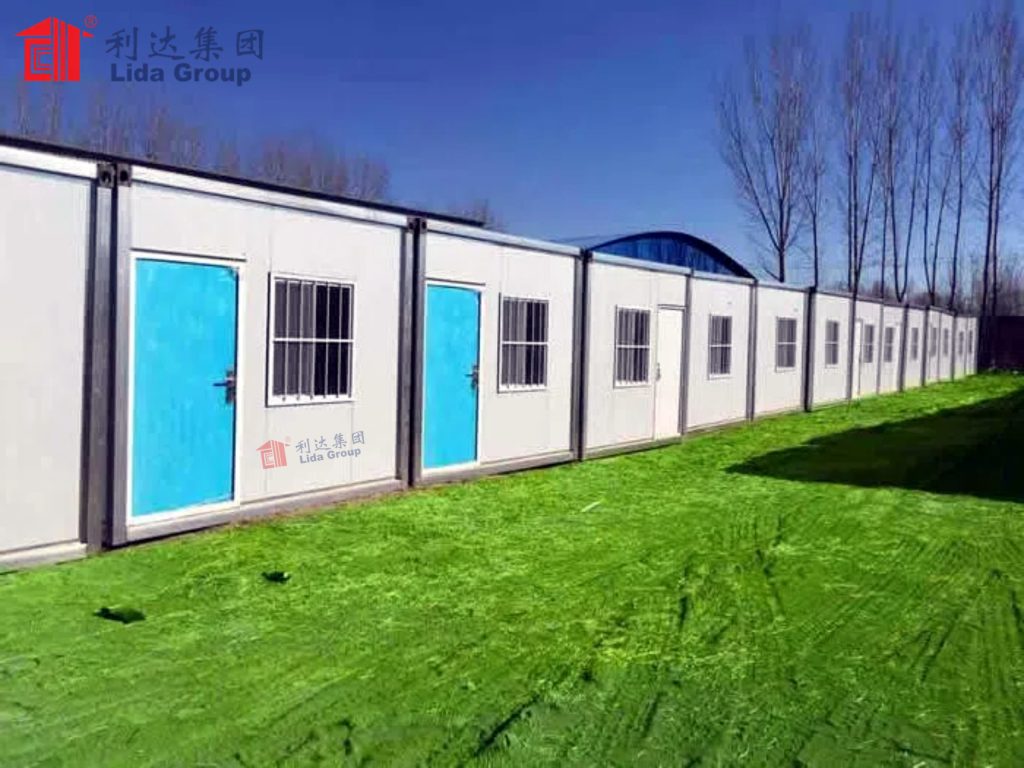
6. Case Studies: Major Construction Firms Succeeding with Lida Group
To illustrate why major construction firms choose Lida Group’s container worker houses, this section examines three case studies from global firms operating in diverse regions and project types. Each case study highlights the challenges faced, the solution provided by Lida Group, and the measurable results achieved.
6.1 Case Study 1: Global Construction Firm (High-Speed Rail Project, Saudi Arabia)
A Fortune 500 construction firm was awarded a $5 billion contract to build a high-speed rail line in Saudi Arabia, requiring accommodation for 1,200 workers. The firm’s challenges were:
- Tight Deadline: The contract required worker accommodation to be ready in 8 weeks to avoid project delays (penalties of $50,000 per day).
- Extreme Heat: Summer temperatures in Saudi Arabia reach 48°C, requiring air-conditioned accommodation to comply with local labor laws.
- Durability: The accommodation needed to withstand sandstorms and last for the 3-year project duration, with no major repairs.
Lida Group’s Solution:
Lida Group delivered 300 container worker houses (200 double rooms, 100 single rooms) and 30 communal facility modules (kitchens, bathrooms, laundry rooms):
- Rapid Deployment: The houses were manufactured in 4 weeks and assembled on-site in 3 weeks, totaling 7 weeks—1 week ahead of the deadline.
- Heat Resistance: All houses included SEER 20+ air conditioners and 150mm thick insulated panels (R-value 6), maintaining an internal temperature of 26–28°C.
- Durability: The steel frames were hot-dip galvanized to resist corrosion from sand and humidity, and the exterior panels were reinforced to withstand sandstorms.
Results:
- On-Time Project Launch: The accommodation was ready in 7 weeks, allowing the firm to start construction on schedule and avoid $500,000+ in penalties.
- Compliance: The air-conditioned houses and 1:8 bathroom ratio passed all inspections by Saudi Arabia’s Ministry of Human Resources.
- Low Maintenance: Over 3 years, the firm spent just \(30,000 on maintenance (mostly filter replacements and minor fixture repairs)—far less than the \)150,000 budgeted.
- Worker Satisfaction: A survey found 90% of workers were satisfied with the accommodation, leading to a 30% reduction in turnover and a 22% increase in productivity.
The firm’s project director stated: “We needed accommodation that was fast, cool, and tough enough for Saudi Arabia’s climate. Lida Group delivered on all counts. The houses were ready on time, kept workers comfortable in the heat, and required almost no repairs. This allowed us to focus on building the rail line, not fixing dormitories.”
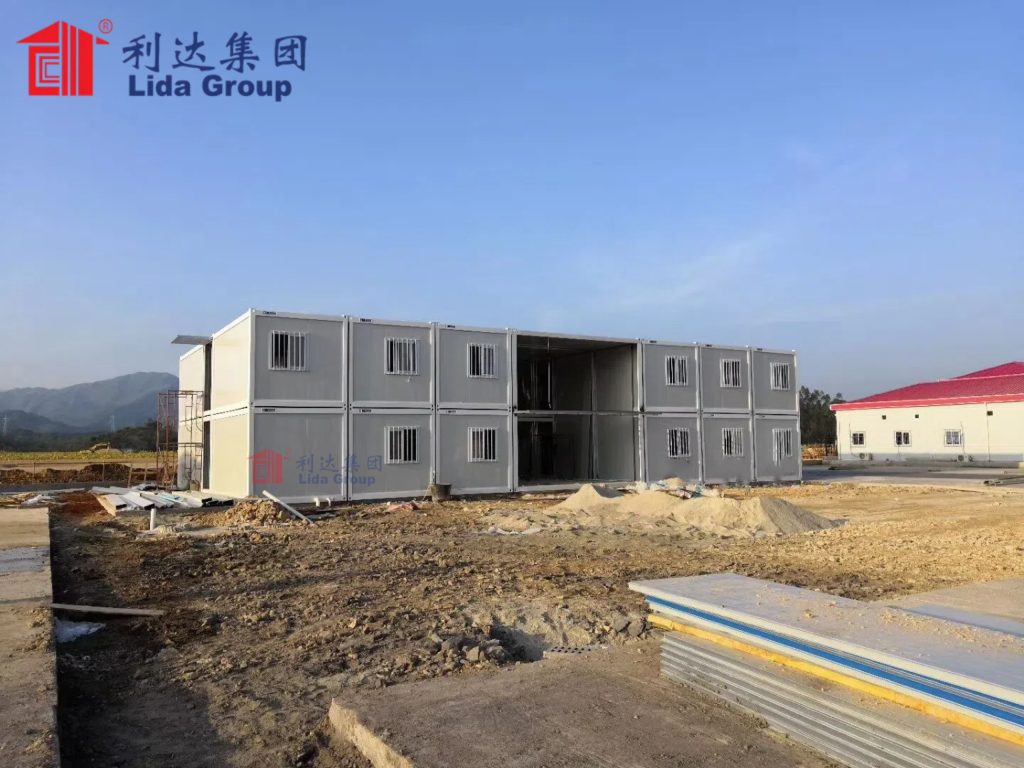
6.2 Case Study 2: Regional Construction Firm (Highway Project, Canada)
A major Canadian construction firm was awarded a $1.2 billion contract to build a 100km highway in Ontario, requiring accommodation for 800 workers. The firm’s challenges were:
- Winter Construction: The project ran year-round, with winter temperatures dropping to -25°C—requiring heated accommodation.
- Relocation: The firm needed to move accommodation every 6 months as construction progressed along the highway.
- Sustainability: The firm had committed to reducing its carbon footprint by 25% for the project, requiring eco-friendly accommodation.
Lida Group’s Solution:
Lida Group provided 200 container worker houses (150 double rooms, 50 single rooms) and 25 communal modules:
- Cold Climate Adaptations: Houses included heat pumps (30% more efficient than electric heaters) and 120mm thick insulated panels, maintaining an internal temperature of 20–22°C in winter.
- Relocatable Design: The houses were designed to be disassembled and reassembled quickly. Each relocation took 5 days (disassembly: 2 days, transport: 1 day, reassembly: 2 days).
- Sustainability Features: Solar panels on the roof generated 40 kWh of electricity per day per house, reducing grid energy use by 50%. Rainwater harvesting systems stored water for laundry and cleaning.
Results:
- Year-Round Construction: The heated houses allowed the firm to continue construction through winter, avoiding a 4-month delay and completing the project 2 months early.
- Cost Savings: Relocating the houses cost \(80,000 per move—far less than the \)300,000 per move the firm would have spent on building new traditional dormitories.
- Sustainability Targets: The solar and rainwater systems reduced the project’s carbon footprint by 28%—exceeding the firm’s 25% target.
- Worker Productivity: Workers reported better sleep in the warm, quiet houses, leading to a 15% reduction in accidents and a 10% increase in daily progress.
The firm’s operations manager commented: “Winter construction in Canada is tough, but Lida Group’s houses made it possible. They kept workers warm, were easy to move, and helped us hit our sustainability goals. We’ve since used them on three more highway projects.”
6.3 Case Study 3: Industrial Construction Firm (Factory Project, Indonesia)
A major industrial construction firm was building a $2 billion manufacturing factory in Jakarta, Indonesia, requiring accommodation for 600 workers. The firm’s challenges were:
- Monsoon Season: Jakarta’s monsoon season brings heavy rain and flooding (up to 1 meter), requiring flood-resistant accommodation.
- Humidity: High humidity (85–90%) causes mold growth in traditional wooden dormitories, leading to worker health issues.
- Budget Constraints: The firm had a limited accommodation budget of $1.5 million and needed to avoid cost overruns.
Lida Group’s Solution:
Lida Group delivered 150 container worker houses (100 double rooms, 50 family rooms) and 20 communal modules:
- Flood Resistance: Houses were placed on steel stilts (1.5 meters high) to avoid floodwater. The exterior panels were waterproof, and all electrical systems were elevated to prevent water damage.
- Humidity Control: Dehumidifiers were installed in each house to maintain humidity below 60%, and the interior surfaces were treated with anti-mold coatings.
- Cost-Effective Design: The fixed-price contract was \(1.4 million—\)100,000 under budget. The firm avoided additional costs by reusing the houses for a subsequent project in Bali.
Results:
- Flood Protection: During the 2023 monsoon, the houses remained dry while nearby traditional dormitories were submerged. No workers were displaced, and construction continued uninterrupted.
- Health Improvements: Mold-related illnesses dropped by 80% compared to the firm’s previous project, reducing sick leave by 25%.
- Budget Compliance: The \(1.4 million cost was within budget, and the firm saved an additional \)500,000 by reusing the houses in Bali.
- Family Accommodation: The 50 family rooms allowed workers to live with their families, reducing turnover by 40% compared to projects with single-only accommodation.
The firm’s human resources director noted: “Jakarta’s monsoons and humidity made accommodation a major concern. Lida Group’s houses kept workers safe and healthy, and the fixed price helped us stay on budget. Being able to reuse them for another project was a bonus—we’ll definitely use Lida Group again.”
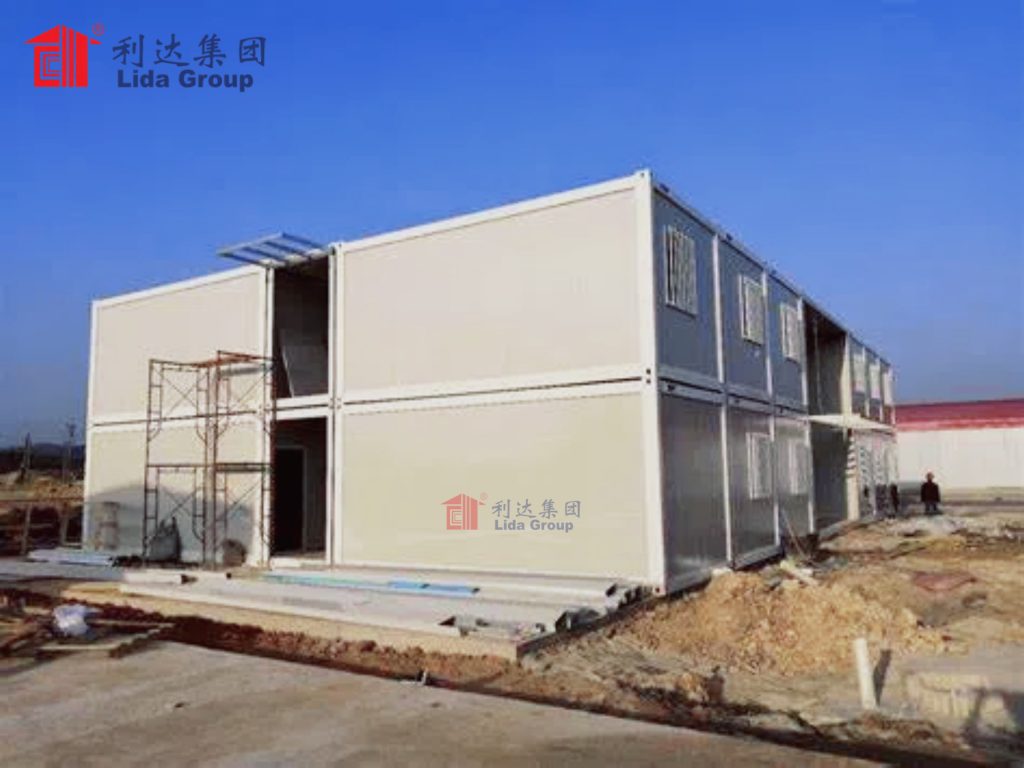
7. Conclusion
In conclusion, major construction firms choose Lida Group’s container worker houses because they address the industry’s most pressing accommodation challenges: durability to withstand harsh job site conditions and rapid deployment to meet tight project timelines. These houses are not just a housing solution—they are a strategic tool that enables firms to reduce costs, mitigate risks, and uphold high standards of worker welfare.
The durability of Lida Group’s houses—rooted in high-strength S355JR steel, hot-dip galvanization, and industrial-grade materials—ensures they last for decades, withstand extreme weather, and require minimal maintenance. This durability reduces long-term costs and allows firms to reuse houses across multiple projects, maximizing return on investment.
The rapid deployment enabled by prefab technology—factory manufacturing, parallel processing, and efficient on-site assembly—cuts accommodation timelines by 60–70%, allowing firms to start projects on schedule and avoid costly delays. This speed is critical for major firms operating under strict contractual deadlines.
Beyond durability and speed, Lida Group’s houses offer additional benefits that resonate with major firms: cost predictability (no overruns), regulatory compliance (avoiding fines), worker welfare (improving productivity and retention), and sustainability (aligning with ESG goals). The case studies from Saudi Arabia, Canada, and Indonesia demonstrate that these benefits translate to tangible results: on-time project launches, reduced costs, improved worker satisfaction, and compliance with local laws.
For major construction firms looking to stay competitive in a fast-paced, regulated industry, Lida Group’s container worker houses are the clear choice. They represent a shift from accommodation as a logistical burden to accommodation as a strategic asset—one that drives project success, protects brand reputation, and supports long-term growth. As the construction industry continues to evolve, Lida Group’s commitment to innovation in durability and rapid deployment ensures its container worker houses will remain the preferred solution for major firms worldwide.

Related news
-
Prefab Building Innovation Meets Worker Welfare: Lida Group's High-Quality Container House Dormitories Offer Unmatched Comfort.
2025-08-27 15:31:46
-
Lida Group Raises the Standard for Worker Accommodation with Its High-Quality Prefab Building Container House Solutions.
2025-08-27 14:54:50
-
The Future of Farming Infrastructure: Smart Technology Integration in Lida Group's High-Quality Steel Farm Houses.
2025-08-26 17:30:30
contact us
- Tel: +86-532-88966982
- Whatsapp: +86-13793209022
- E-mail: sales@lidajituan.com


